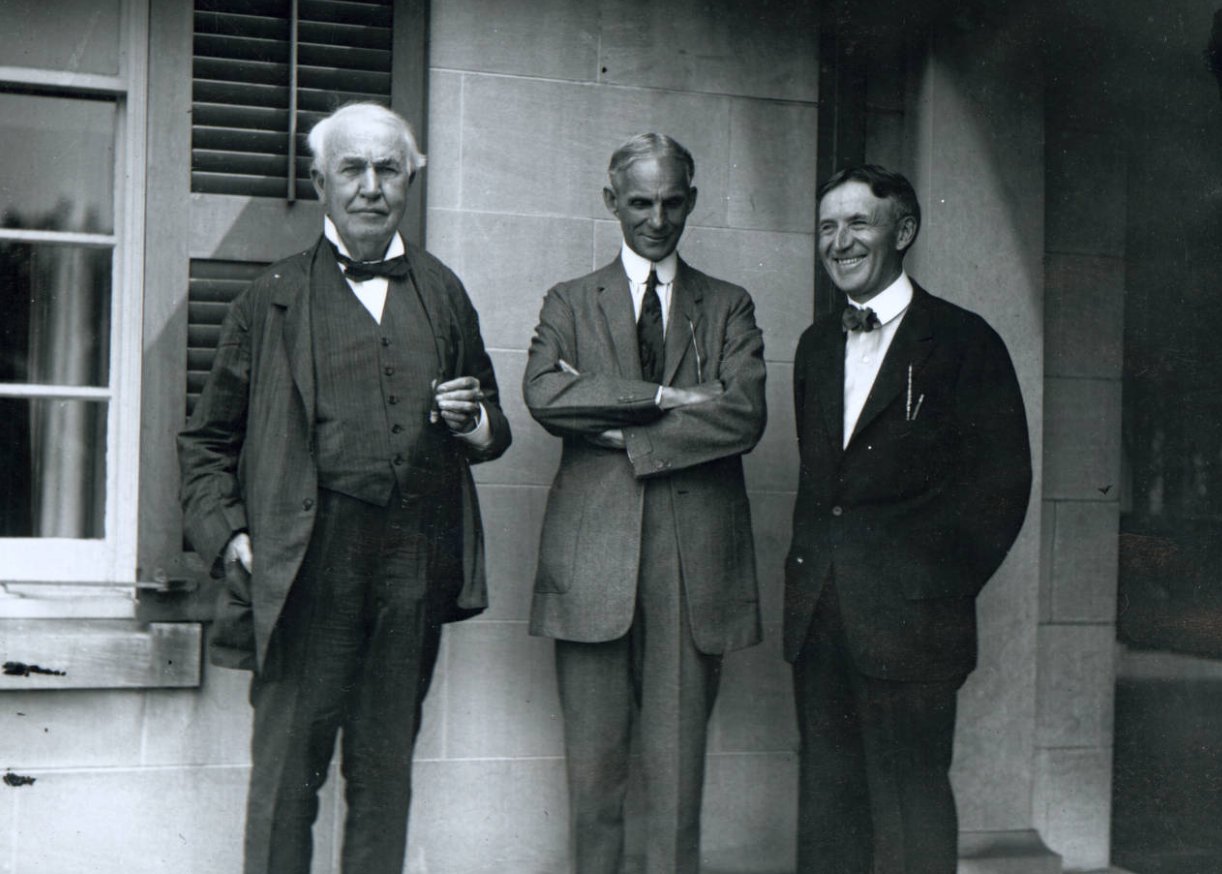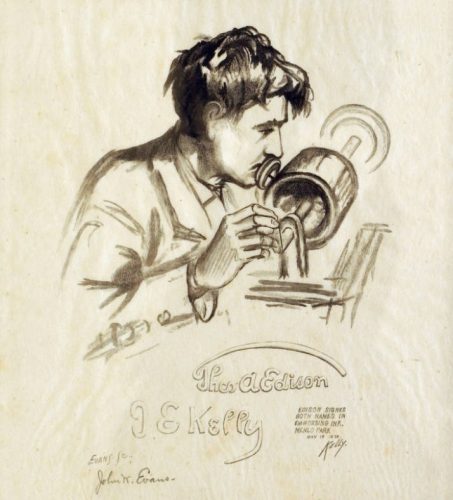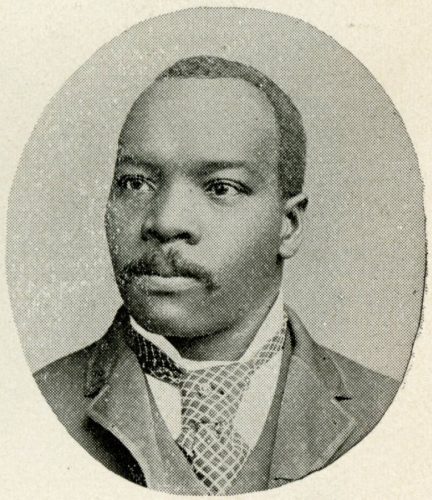Inventing Ohio


The first airplane. The light bulb. The …revolving hay rake? From the well-known to the lesser-known, Ohio’s history is chock-full of innovative inventors who created and perfected many of the products we use in our lives today, and many of the tools and technologies that have contributed to the world as we know it.
Yesterday, February 11, was National Inventors’ Day, first proclaimed by President Reagan in 1983, in recognition of ” inventors [as] the keystone of the technological progress that is so vital to the economic, environmental, and social well-being of this country.” The date was chosen because it is the birthday of Thomas Edison, who was born in Milan, Ohio, in 1847. Among his best-known inventions are the improved incandescent light bulb, the phonograph, and the Kinetograph and Kinetoscope, but Edison eventually had 1,093 patents to his name—more than any other American in history! The woodcut sketch at right, by sculptor J. E. Kelley, was based on an 1878 photograph of Edison and his first phonograph, which is widely noted as being his “favorite” of his many inventions. A bronze medallion was cast from the sketch, then signed by Edison with his newly-invented electric pen, a precursor to the mimeograph.

Another prolific Ohio inventor, born less than a decade after Edison, was Granville T. Woods. He was born in Columbus in 1856, and as a young man, formed the Woods Railway Telegraph Company in Cincinnati with his brother Lyates in 1884. Largely self-taught, Woods worked his way up through the railroad industry, and eventually received 35 patents for electrical and mechanical devices between 1884 and 1907, and more than 60 patents total. Most of his inventions contributed to improvements in the railroad system, including telegraphony, which allowed telegraph stations to send both voice and telegraph messages over a single wire, and the Synchronous Multiplex Railway Telegraph, which allowed communication between moving trains rail stations and drastically increased railway safety. Edison actually sued Woods over the latter invention, claiming he had already invented a similar system, but courts ultimately sided with Woods who successfully defended his right to the patent. Edison went on to offer Woods (who is sometimes referred to as “the Black Thomas Edison”) a position at his firm, but Woods declined.
Beyond these two renowned innovators, Ohio Memory includes material related to a number of other Ohioans who invented or improved a wide range of products. Many of these relate to the state’s agricultural history, including the revolving hay rake mentioned above, which could cover about three acres of land in an hour; the company claimed that one man with a revolving rake could do the work of six men with traditional hand rakes. Other developments include the A.D. Baker thresher, the “New Idea” mechanical manure spreader, and the A.I. Root Extractor, used to remove honey from the comb.
Other noted inventions include:
- The Hoover vacuum, invented by J. Murray Spangler but popularized and manufactured by a family friend, W. H. “Boss” Hoover.
- The Gardner craniotomy chair, a neurosurgery aid invented by Dr. James Gardner of the Cleveland Clinic (who had many other ingenious medical devices to his name).
- The wireless crystal radio set, perfected and manufactured by Powel Crosley, Jr., of Cincinnati.
- The tangent index, by Otterbein professor and amateur astronomer John Haywood.
- The automotive self-starter, invented by Charles Kettering, which revolutionized the automobile industry. Prior to Kettering’s invention, cars had to be started by hand by turning a large crank in the front of the car.
- Numerous products invented by Charles Brush and produced by the Brush Electric Company of Cleveland, which would merge with the Edison General Electric Company in 1891 to become General Electric.
Visit Ohio Memory to learn more about these and other Ohio inventors—many of whom are also included in the National Inventors Hall of Fame, headquartered in North Canton, Ohio. Ohioans continue to innovate every day, and we hope you find inspiration in these stories to think about how to improve your community, our state, and beyond!
Thank you to Lily Birkhimer, former Digital Projects Coordinator at the Ohio History Connection, for this week’s post!



Leave a Reply
You must be logged in to post a comment.